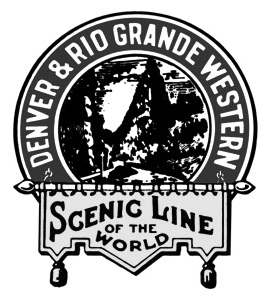(Originally published in the November 1994 Colorado Central Magazine, updated by Forrest Whitman)
1880: The Denver & Rio Grande wins the Royal Gorge War with the Atchison, Topeka & Santa Fe, and builds a narrow gauge line west from Cañon City up the Arkansas as far as Crane Park, near the summit of Tennessee Pass.
1881: The narrow gauge line is extended over Tennessee Pass to Red Cliff.
1887: Via Glenwood Springs, the Tennessee Pass line reaches Grand Junction, where it connects with the other narrow gauge line which runs from Salida over Marshall Pass to Gunnison and points west.

1890: The Tennessee Pass line is converted to standard gauge between Pueblo and Grand Junction. A tunnel is bored under Tennessee Pass, and the old narrow gauge route, now a popular cross-country ski trail, is abandoned.
1940: The narrow gauge passenger train to Gunnison and Montrose is terminated.
1955: Marshall Pass is abandoned.
1964: Through passenger service on the Royal Gorge route is terminated. The D&RGW’s “Royal Gorge” now goes from Denver to Salida, where it turns around and returns to Denver.
1967: All passenger service is eliminated between Denver and Salida.
1971: The engine terminal in Salida is closed, so that through freights no longer stop to change crews.
1985: The Salida depot is torn down and the truss bridge across the Arkansas River is removed after the abandonment of the quarry line.
1988: Phil Anschutz, owner of the D&RGW, purchases the Southern Pacific, and begins to integrate the two systems.
1993: The first passenger train in years comes through the Royal Gorge line. Pulled by leased Amtrak locomotives, it consists entirely of private rail cars, in a chartered excursion from Pueblo to Sacramento.
Sept. 11, 1996: “A day that shall be remembered in railroad annals of infamy,” the Union Pacific gets the Tennessee Pass line and runs the last freight one year later. Original mainline of the D&RGW railroad left to moulder away since then, though a bit of annual maintenance is done.


